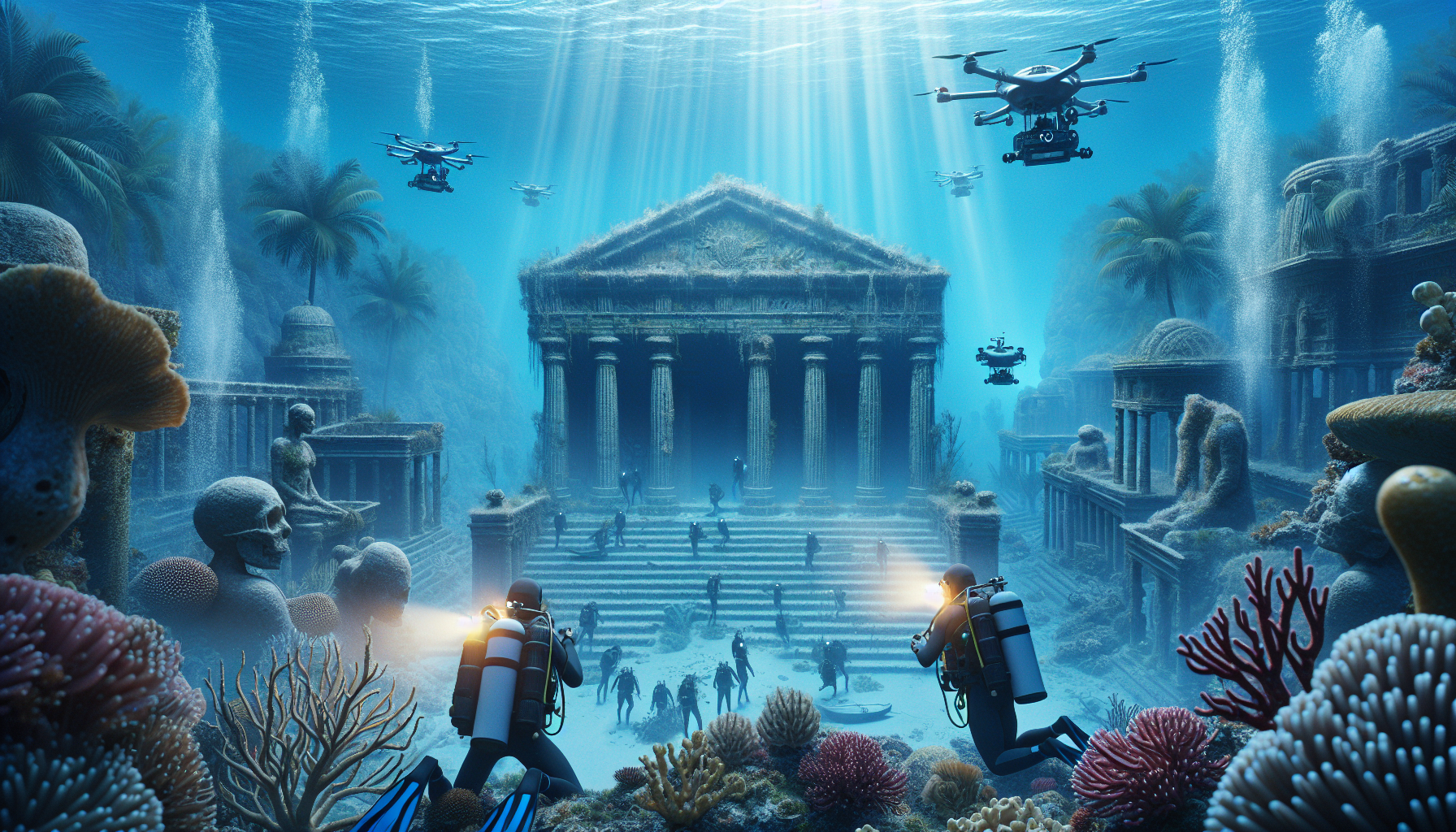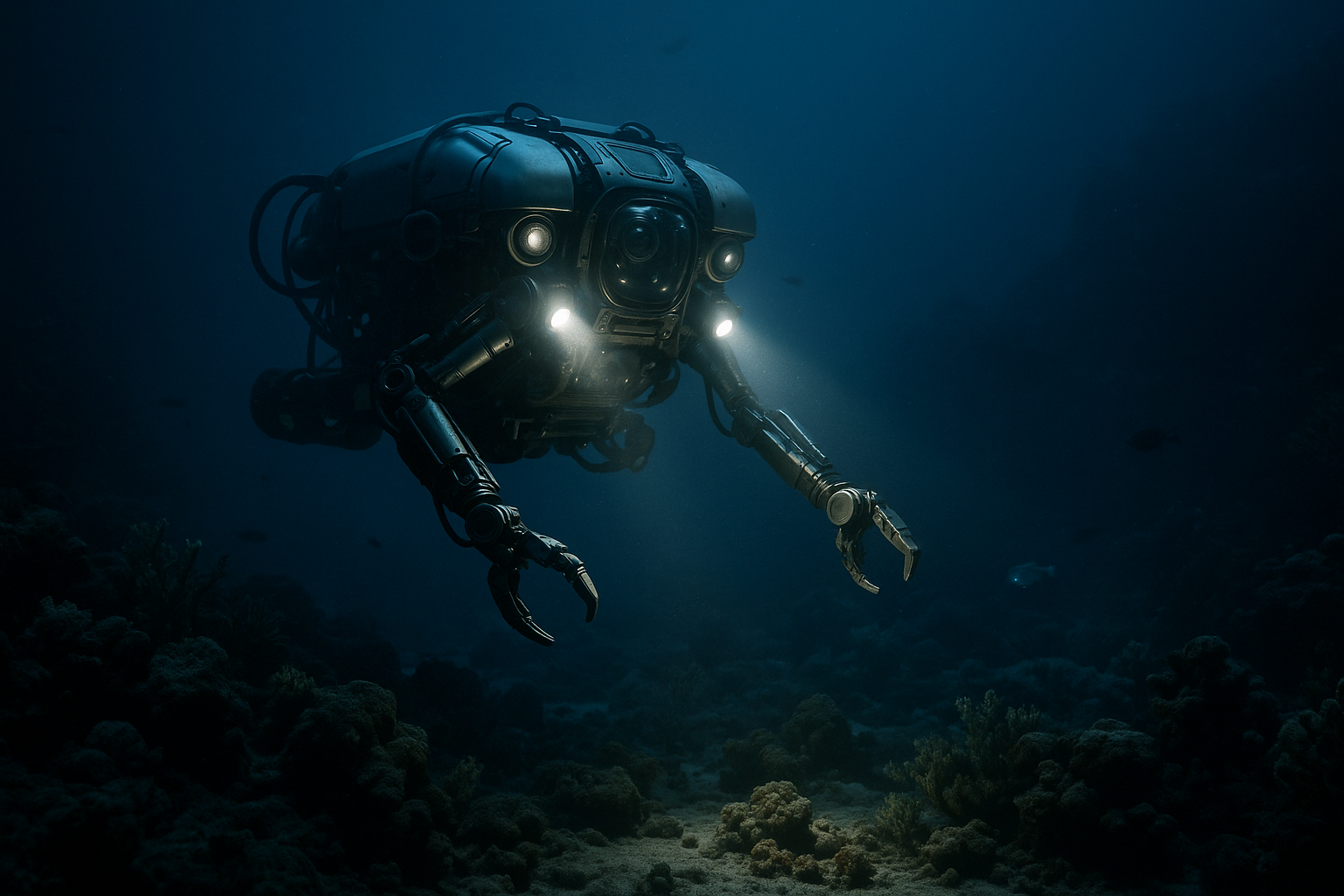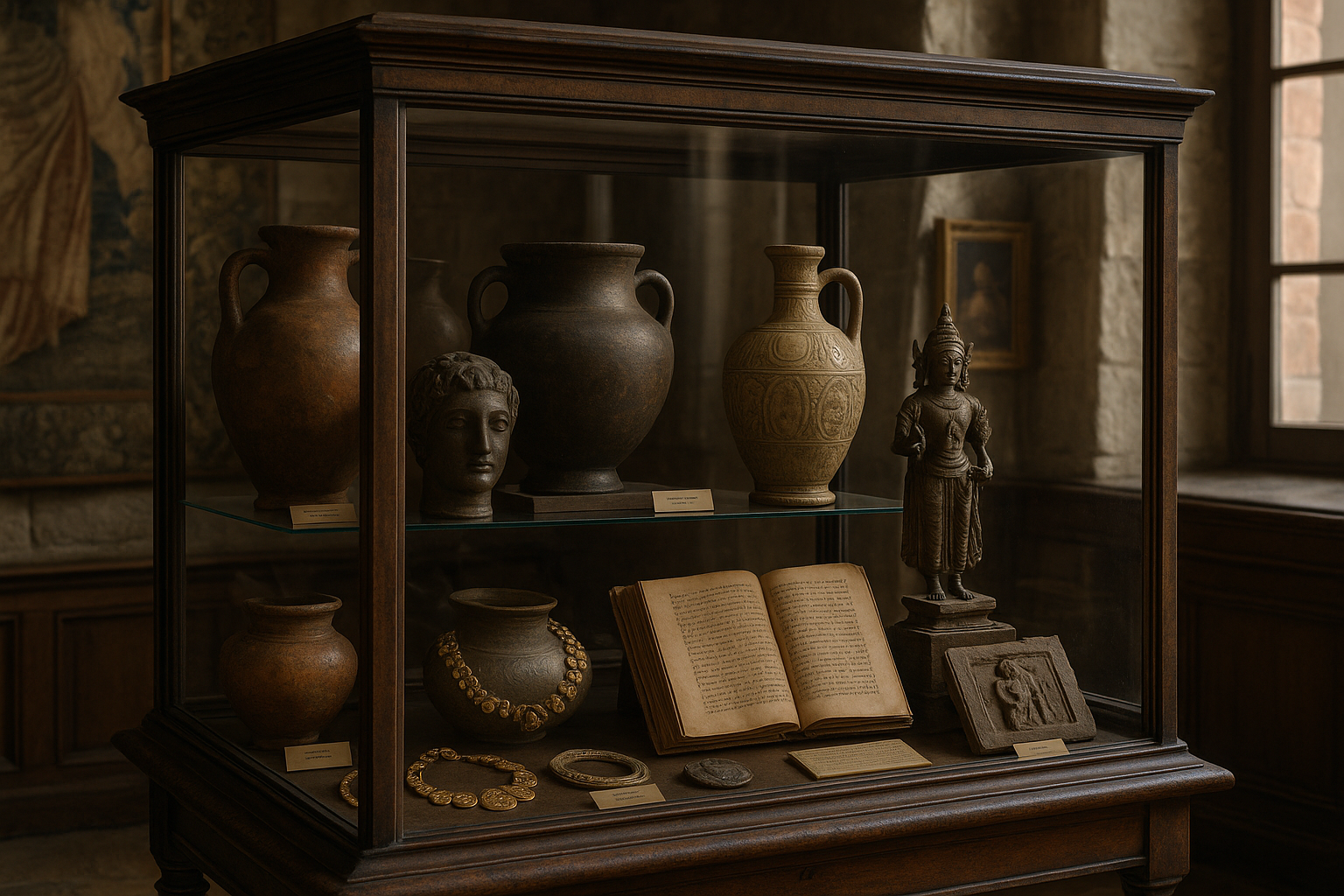In the vast expanse of our world’s oceans lies a tapestry of hidden stories, waiting to be unveiled. These tales are not of myth or fiction but of ancient civilizations that once thrived above sea level, their legacies now submerged beneath waves. Welcome to the intriguing realm of sunken cities, where history, science, and adventure converge. As we embark on this journey, we delve into the logistics that make these explorations possible, navigating the delicate dance between preserving the past and pushing the boundaries of human discovery. 🌊
The allure of sunken cities captivates the imagination—lost metropolises like Atlantis spark our curiosity and challenge our understanding of history. But beyond the myths, real submerged cities such as Thonis-Heracleion off the coast of Egypt, or the remnants of Dwarka in India, invite explorers to piece together the narratives of bygone eras. Yet, reaching these underwater worlds is no simple feat. It requires a harmonious blend of cutting-edge technology, rigorous planning, and a deep respect for the cultural and historical significance of what lies below. Throughout this article, we will unravel the sophisticated logistics involved in these daring underwater explorations: from the innovative submersibles that allow us to venture into the abyss to the meticulous archaeological methods used to ensure that every discovery is made with precision and care.
As we navigate the depths, we will also confront the challenges that arise, from unpredictable weather patterns to the complex legal and ethical considerations of exploring cultural heritage sites. We’ll discuss the international collaborations necessary to safeguard these treasures and the pivotal role of technology in transforming underwater archaeology. By the end of this exploration, you will gain a deeper appreciation for the courage and ingenuity required to uncover these lost worlds and the profound insights they offer into the resilience and ingenuity of ancient civilizations. Join us as we dive beneath the surface and into the depths of history, where the past awaits discovery. 🗺️
The Enigma of Sunken Cities
Sunken cities have long fascinated historians, archaeologists, and adventurers alike. These underwater realms hold the keys to understanding ancient civilizations, their cultures, and the circumstances that led to their submersion. Exploring these cities is akin to piecing together a vast puzzle, where each discovery adds to our understanding of human history. The allure of uncovering these lost worlds is not just about uncovering artifacts; it’s about delving into the narratives of societies that thrived before meeting a watery fate.
The logistics involved in exploring these submerged sites are incredibly complex. Divers and archaeologists must navigate challenging underwater terrains, often dealing with strong currents and limited visibility. Moreover, preserving the integrity of these sites is crucial. It’s a delicate balance between exploration and conservation. As we unravel the mysteries of these cities, we also face the ethical dilemma of how much to excavate versus how much to leave undisturbed for future generations.
Technological advancements have revolutionized how we explore sunken cities. Innovations such as underwater drones and sonar mapping allow for more precise and less intrusive explorations. These technologies enable researchers to create detailed maps of submerged sites, revealing the layout of ancient cities that have remained hidden for centuries. As we delve deeper into these underwater mysteries, the stories of lost civilizations emerge, offering a glimpse into the past and lessons for the present.
The Logistics of Underwater Exploration
Exploring sunken cities requires meticulous planning and coordination. The logistics of mounting an underwater expedition involve assembling a team of experts, including marine archaeologists, divers, and technical specialists. Each member plays a crucial role in ensuring the safety and success of the mission. The challenges faced during these expeditions are multifaceted, ranging from environmental conditions to equipment limitations.
The first step in any underwater exploration is conducting thorough research to identify potential sites. This involves analyzing historical records, satellite imagery, and oceanographic data. Once a site is identified, the next phase involves obtaining the necessary permits and funding, which can be a time-consuming process. Given the significant costs associated with these expeditions, securing financial backing is often one of the biggest hurdles.
Once on-site, the team must meticulously plan each dive to maximize efficiency and safety. This includes briefing on dive protocols, emergency procedures, and communication systems. Divers often work in pairs or small groups to ensure that they can assist one another if needed. The harsh underwater environment requires specialized equipment, such as underwater cameras, lighting systems, and breathing apparatus, all of which need regular maintenance and calibration.
Technological Innovations in Marine Archaeology
Advancements in technology have opened new frontiers in the exploration of sunken cities. Remotely Operated Vehicles (ROVs) and Autonomous Underwater Vehicles (AUVs) have become invaluable tools in marine archaeology. These devices can reach depths and navigate terrains that are challenging or impossible for human divers. Equipped with high-resolution cameras and sonar systems, ROVs and AUVs can capture detailed images and maps of submerged sites without disturbing the environment.
In addition to ROVs and AUVs, developments in sonar technology have greatly enhanced the ability to detect and map underwater structures. Side-scan sonar and multibeam sonar systems provide detailed imagery of the seabed, revealing the contours and features of submerged landscapes. These technologies allow archaeologists to visualize the layout of ancient cities and identify potential areas of interest for further investigation.
Furthermore, advances in 3D modeling and virtual reality have transformed how we interpret and present findings from underwater explorations. These tools allow researchers to create immersive reconstructions of sunken cities, providing a unique perspective on how these ancient civilizations might have looked. Such visualizations are not only valuable for academic study but also for engaging the public and generating interest in marine archaeology.
Environmental and Ethical Considerations
While the exploration of sunken cities offers valuable insights into our past, it also raises important environmental and ethical considerations. The underwater ecosystems surrounding these sites are often delicate, and human interference can have detrimental effects. As such, it is imperative to conduct explorations in a manner that minimizes environmental impact.
Preservation of these sites is a priority for archaeologists. The removal of artifacts must be carefully considered and documented, with a focus on ensuring that future generations can continue to study and learn from these sites. The question of ownership and cultural heritage is another ethical concern. Many sunken cities are located in disputed waters, leading to debates over who has the right to excavate and possess the artifacts found therein.
International collaboration is essential in addressing these challenges. Organizations such as UNESCO work to establish guidelines and frameworks for the protection and preservation of underwater cultural heritage. By promoting cooperation and sharing knowledge, we can ensure that the exploration of sunken cities is conducted responsibly and sustainably.
Case Study: The Lost City of Heracleion
The discovery of Heracleion, an ancient Egyptian city submerged in the Mediterranean Sea, is a testament to the challenges and triumphs of underwater archaeology. Once a bustling trade hub, Heracleion sank into the sea around the 2nd century BC. Its rediscovery in 2000 by French archaeologist Franck Goddio captured the imagination of the world.
Excavating Heracleion required overcoming significant logistical challenges. The site is located in a sediment-rich area with poor visibility, necessitating the use of cutting-edge technology to map and document the city. The team employed sonar mapping and magnetic surveys to detect the city’s remains beneath layers of silt.
The findings at Heracleion have been extraordinary, revealing a wealth of artifacts that shed light on the city’s history and culture. Statues, coins, and inscriptions provide a glimpse into life in ancient Egypt, while the discovery of shipwrecks offers insights into the trade networks of the time. The exploration of Heracleion continues to this day, with new discoveries regularly emerging from the depths.
TechnologyFunctionBenefitsROVs & AUVsRemote exploration and mappingAccess to deep and challenging terrainsSonar SystemsSeabed imaging and structure detectionDetailed topographical maps3D ModelingReconstruction of sitesImmersive visualizations
For a deeper dive into the exploration of Heracleion, check out this fascinating video on YouTube: “The Lost City of Heracleion” by Nat Geo UK.
The Future of Underwater Exploration
The future of exploring sunken cities lies in the continued development and integration of new technologies. As we look to the future, the potential for even more groundbreaking discoveries is immense. The integration of AI and machine learning in data analysis promises to revolutionize how we interpret findings and make predictions about submerged sites.
Moreover, as interest in underwater archaeology grows, there is a push towards making these discoveries more accessible to the public. Virtual tours and online databases are being developed to allow people worldwide to explore these fascinating sites from the comfort of their homes. This democratization of knowledge not only educates but also fosters a global appreciation for our shared cultural heritage.
As we continue to uncover the mysteries of these lost worlds, we must remain mindful of the balance between exploration and preservation. By respecting the environments and cultures we study, we can ensure that the legacy of these sunken cities endures for generations to come.
- Plan meticulously for underwater expeditions.
- Utilize cutting-edge technology for exploration.
- Preserve and respect underwater cultural heritage.
- Engage in international collaboration for shared knowledge.
- Embrace technological advancements for future discoveries.
For those interested in further exploration and discovery, these sunken cities offer a unique and unparalleled adventure into the depths of history. 🏺🌊

Conclusion
In conclusion, the exploration of sunken cities represents a captivating intersection of history, archaeology, and modern technology. Throughout this article, we have delved into the complexities and marvels associated with uncovering these submerged wonders. From the initial discovery and identification of these sites to the intricate logistics of their exploration, the journey to reveal the secrets of sunken cities is as challenging as it is rewarding.
To recapitulate, we began by examining the historical context of sunken cities, recognizing them as invaluable time capsules that offer insights into ancient civilizations. These submerged landscapes often hold clues about past cultures, trade routes, architectural advancements, and societal structures, providing a unique perspective on human history.
Next, we addressed the technological advancements that have revolutionized underwater archaeology. Innovations such as sonar mapping, remotely operated vehicles (ROVs), and advanced diving gear have significantly enhanced our ability to locate, explore, and document sunken sites with precision and care. These technologies not only improve accessibility but also ensure the preservation of these delicate underwater environments.
Furthermore, we explored the logistical challenges inherent in underwater exploration. From securing funding and permits to assembling expert teams and ensuring the safety of all involved, the process is fraught with complexities. Yet, it is the collaboration between archaeologists, engineers, historians, and conservationists that enables successful exploration and conservation of these submerged sites.
The environmental and ethical considerations in exploring sunken cities were also emphasized. The delicate balance between exploration and preservation is crucial to protect these sites from damage and ensure they can be studied by future generations. Ethical exploration involves respecting the cultural heritage and ecological significance of these underwater landscapes.
The importance of public engagement and education was highlighted as a means to foster appreciation and support for these endeavors. By making the findings accessible and relatable, we can inspire a global audience to value and preserve our shared history beneath the waves.
As we conclude, it is essential to recognize the profound impact that exploring sunken cities can have on our understanding of human history and our appreciation for the ingenuity and resilience of past civilizations. These explorations remind us of the transient nature of human achievement and the enduring legacy of cultural heritage.
We encourage you, our readers, to reflect on the significance of these discoveries. Engage with this fascinating field by sharing this article with others, sparking conversations about the wonders beneath our oceans. Whether you are an enthusiast, a scholar, or simply curious, your interest and support can drive further exploration and preservation efforts. 🌊
To stay informed about ongoing discoveries and advancements in underwater archaeology, consider following reputable sources such as the National Geographic Society [https://www.nationalgeographic.com], the UNESCO World Heritage Centre [https://whc.unesco.org/en/underwater-cultural-heritage/], and the Institute of Nautical Archaeology [https://nauticalarch.org].
In the spirit of exploration, let us continue to uncover the lost worlds that lie beneath the sea, enriching our understanding of the past and inspiring future generations to preserve our submerged heritage. Together, we can navigate the logistics of exploring sunken cities and unveil the secrets of our planet’s hidden history. 🌍✨
Toni Santos is a visual storyteller and archival artist whose work dives deep into the submerged narratives of underwater archaeology. Through a lens tuned to forgotten depths, Toni explores the silent poetry of lost worlds beneath the waves — where history sleeps in salt and sediment.
Guided by a fascination with sunken relics, ancient ports, and shipwrecked civilizations, Toni’s creative journey flows through coral-covered amphorae, eroded coins, and barnacle-encrusted artifacts. Each piece he creates or curates is a visual meditation on the passage of time — a dialogue between what is buried and what still speaks.
Blending design, storytelling, and historical interpretation, Toni brings to the surface the aesthetics of maritime memory. His work captures the textures of decay and preservation, revealing beauty in rust, ruin, and ruin’s resilience. Through his artistry, he reanimates the traces of vanished cultures that now rest on ocean floors, lost to maps but not to meaning.
As the voice behind Vizovex, Toni shares curated visuals, thoughtful essays, and reconstructed impressions of archaeological findings beneath the sea. He invites others to see underwater ruins not as remnants, but as thresholds to wonder — where history is softened by water, yet sharpened by myth.
His work is a tribute to:
The mystery of civilizations claimed by the sea
The haunting elegance of artifacts lost to time
The silent dialogue between water, memory, and stone
Whether you’re drawn to ancient maritime empires, forgotten coastal rituals, or the melancholic beauty of sunken ships, Toni welcomes you to descend into a space where the past is submerged but never silenced — one relic, one current, one discovery at a time.




